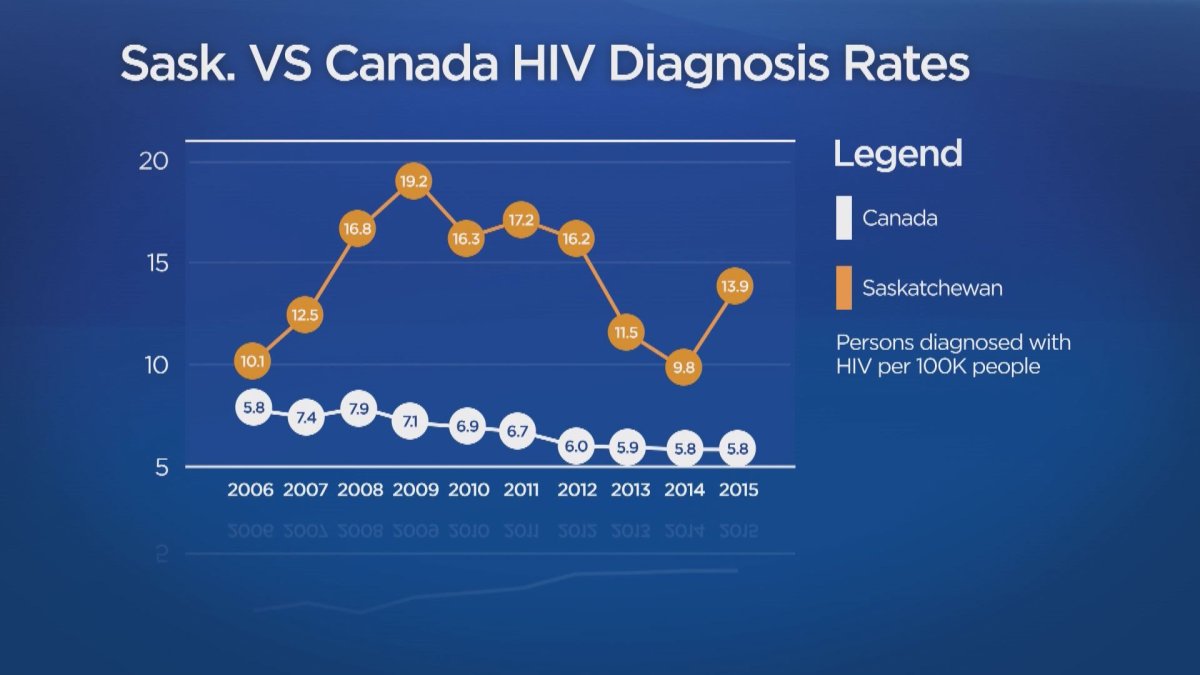For the past ten years, rates of HIV diagnosis in Saskatchewan have been consistently higher than the national average in Canada.

Since 2009, rates trending were trending down but last year saw a dramatic spike. According to Saskatchewan’s deputy chief medical health officer, Dr. Denise Werker, the spike is due in part to the use of needles.
READ MORE: Justin Trudeau hoists World AIDS Day flag on Parliament Hill
Of the 160 new HIV cases last year, 129 people identified as aboriginal.
Jann Ticknor with the Saskatchewan Indigenous Strategy on HIV and AIDS said the stark contrast can be linked to a number of complexities like residential schools or injection drug use.
“The most common piece that people who inject drugs share is they were abused sexually as children and so when we start to put pieces together about why people inject drugs… we start to understand HIV might look like here,” Ticknor said.
“People call it an epidemic, people call it a pandemic, people call it a state of emergency. I call it time to act.”
According to the province, testing for HIV in Saskatchewan has increased — an average of six per cent — since 2006.
Now, being diagnosed with HIV is no longer considered a death sentence.
“It’s easier to manage living with HIV than it is to manage with diabetes. Our message is know your status, get tested,” Ticknor said.
Dr. Werker said there is treatment for HIV that can help a person who is infected lead a near normal life with a normal life expectancy.
“For the last couple of years we’ve been spending more efforts and expanding outreach and testing in these rural and remote communities,” Werker said.
In October, the Ministry of Health joined forced with about 180 partners, including indigenous leaders, clinicians, and health regions, to implement a multi-year plan to address HIV.
Flash Mob
A group of grandmothers also hoped to bring awareness to the prevalance of HIV and AIDS by holding a World AIDS Day flash mob.
The Grandmothers 4 Grandmothers group danced to The Eurythmics’ “Sisters are Doing it for Themselves” at the University of Regina’s Riddell Centre.
The flash mob was playful way to draw attention a serious problem.
“Just remind people that AIDS is very prevalent. There are hundreds of thousands of people on the continent who have the disease, who are dying of the disease… this is an awareness event.”



Comments